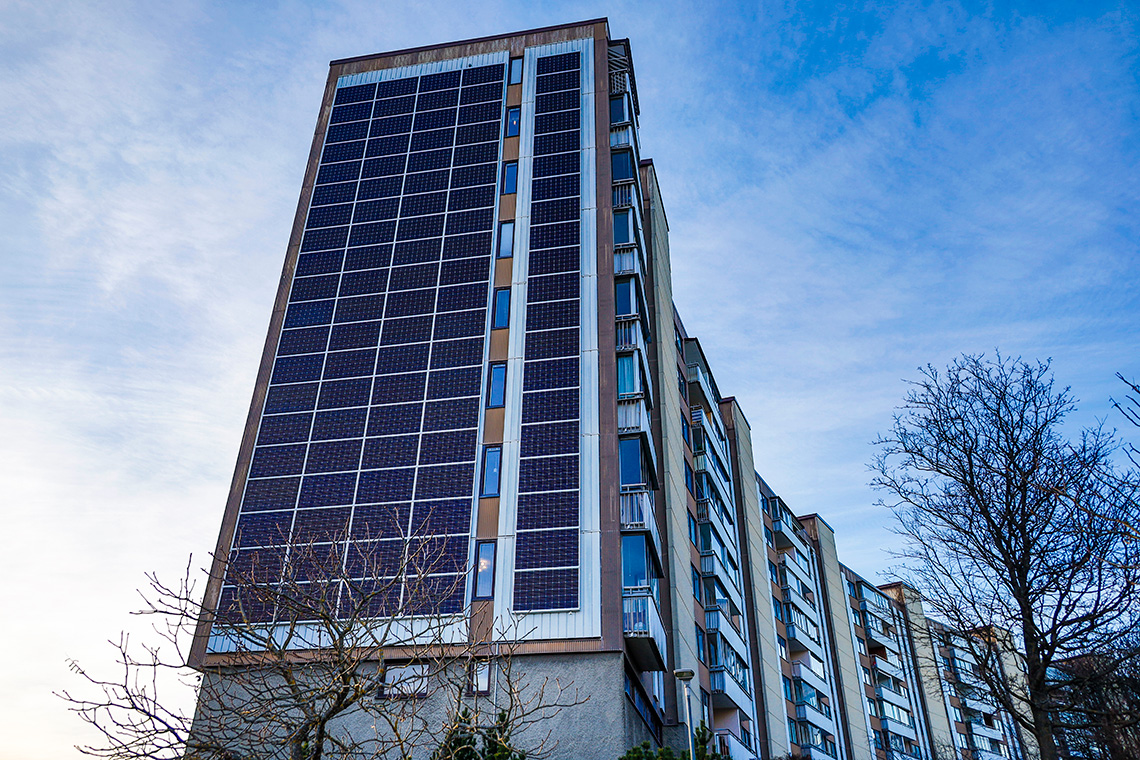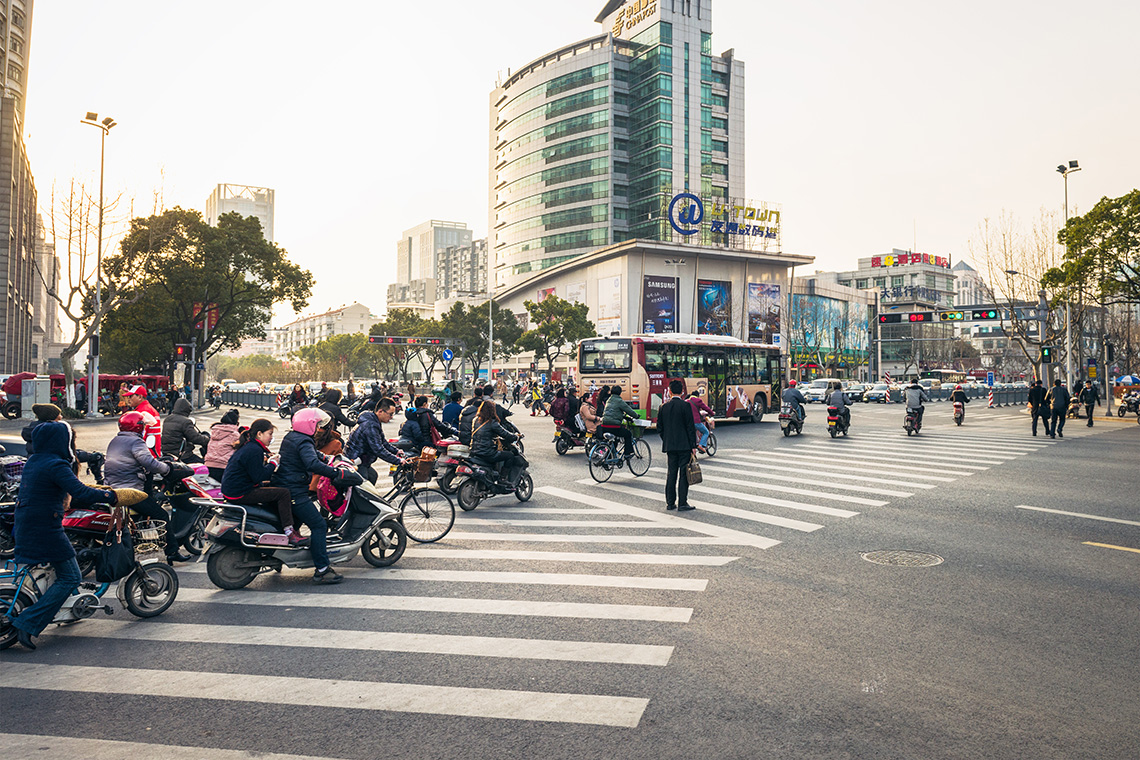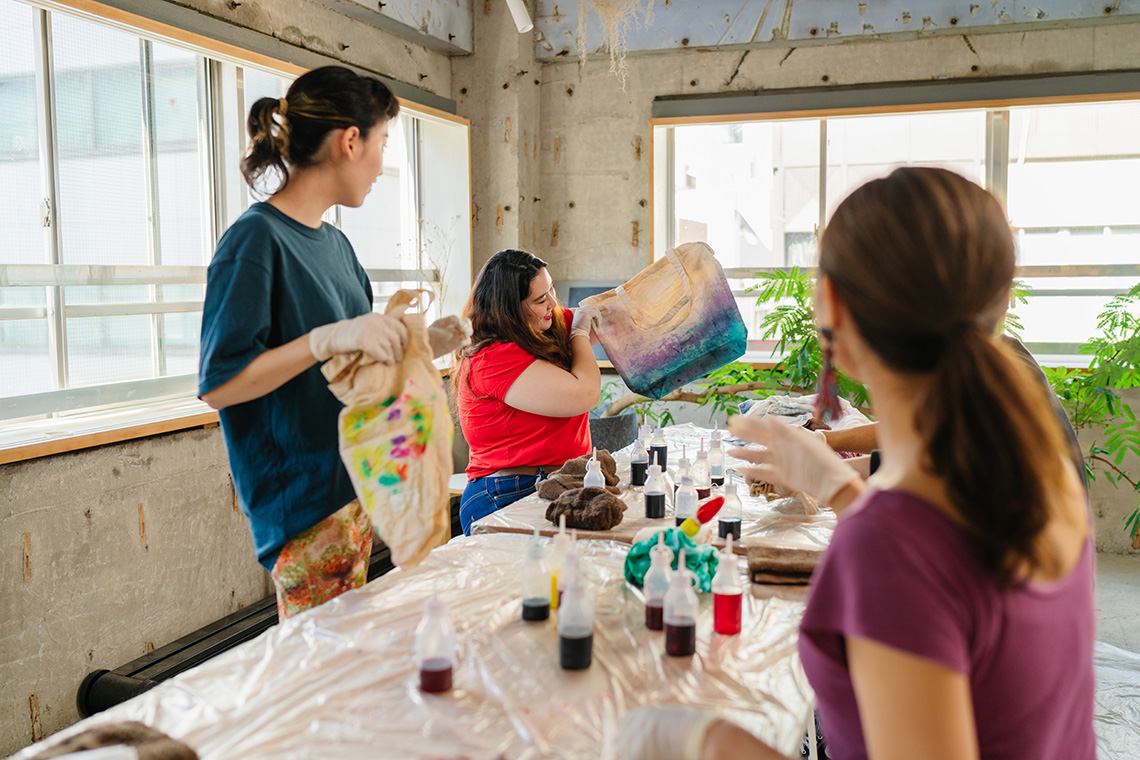Minds On
Innovative solutions
Throughout the world, nations, companies, and Indigenous Peoples have come up with ways of facing the challenges resulting from resource extraction. In many cases, they have founded innovative solutions and are using flow resources.
Explore the following images and consider how we can make sustainable choices in our daily lives.
Student Success
Think-Pair-Share
Take a moment to reflect on the following question. If possible, share your thoughts and ideas with others.
- What are some ways people are making choices in their daily lives that create a sustainable future?
Note to teachers: See your teacher guide for collaboration tools, ideas and suggestions.
Press Definition to explore the definition of sustainability.
Action
Task 1: Solutions to challenges
In the face of environmental challenges connected with resource extraction, some nations have taken steps to improve their situation.
Press the following country names to reveal information about their challenges and solutions.
In China, there has been an initiative to plant trees and stop desertification. More than a quarter of China is covered with desert. Deserts threaten to cover entire villages and ruin agricultural farmland putting both lives and livelihoods at risk. In some cases, entire villages have had to relocate. China has made a concentrated effort to plant trees and vegetation in order to convert dry lands into forests as well as expand agriculture.

The image shows new planted of trees to stop desertification in China. There are planted trees and agriculture that slopes down several depicted hillsides.
In China, modern buildings are also including vertical forests as a way of offsetting the effects of carbon dioxide emissions. As the most populated country in the world at 1.39 billion in 2021, China’s carbon dioxide emissions are amongst the highest in the world. In an effort to balance emissions and combat climate change, one initiative includes making sure all apartments and buildings include vegetation. These not only emit oxygen but also provide feeding sites for bird and insects and a new habitat in an urban setting. While there have been challenges regarding uncontrolled rapid development of the vegetation and mosquitos, plans are evolving to continue to try new initiatives.

The image shows buildings that include vertical forests in China. Three buildings are shown all of which have trees, plants and vegetation growing on this balcony gardens. In some cases, the vegetation as almost completely overtaken the balcony and it overhangs reaching other balconies.
The majority of Holland (the Netherlands) is below sea level. Housing, food supply, and fresh drinking water supplies have been under threat from rising sea levels for decades. They have found solutions to control the impact of high sea levels through a series of dikes or waterways to redirect water so that lands remain intact. They have also found ways of using the windy conditions on their coast to their advantage in terms of harnessing the wind to generate electricity. Not only does the use of wind turbines produce the required energy, but being a flow resource, it does not impact the natural environment or climate to the same degree as traditional fossil fuels.
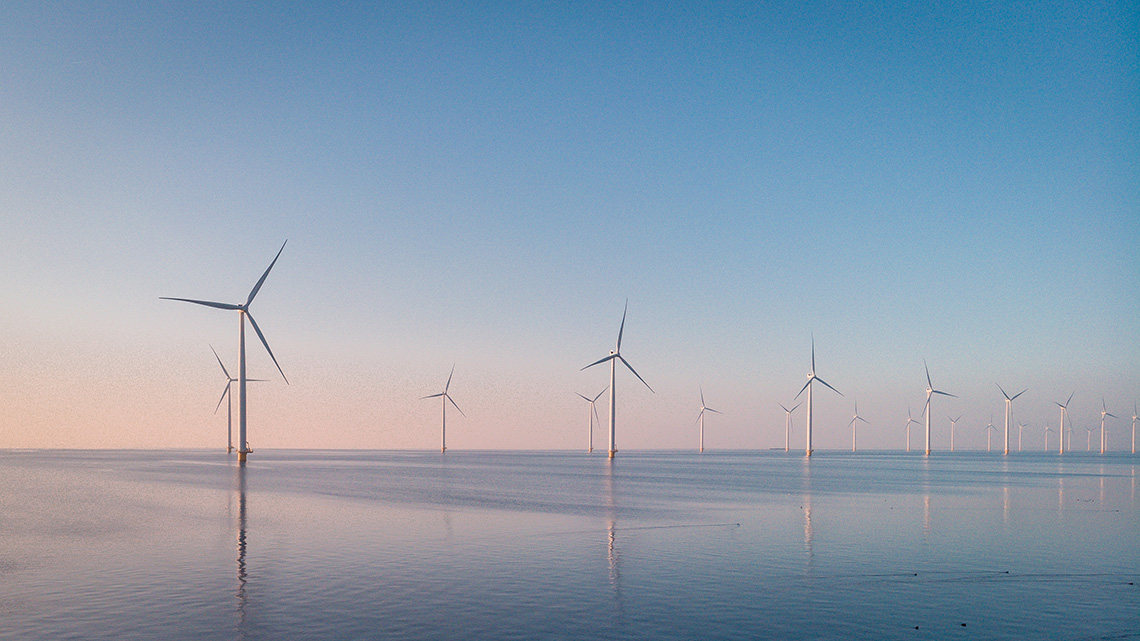
Windmills in Holland. Many windmills are placed in the water on the coast. Each one has 3 blades and the shoreline is shown in the background.
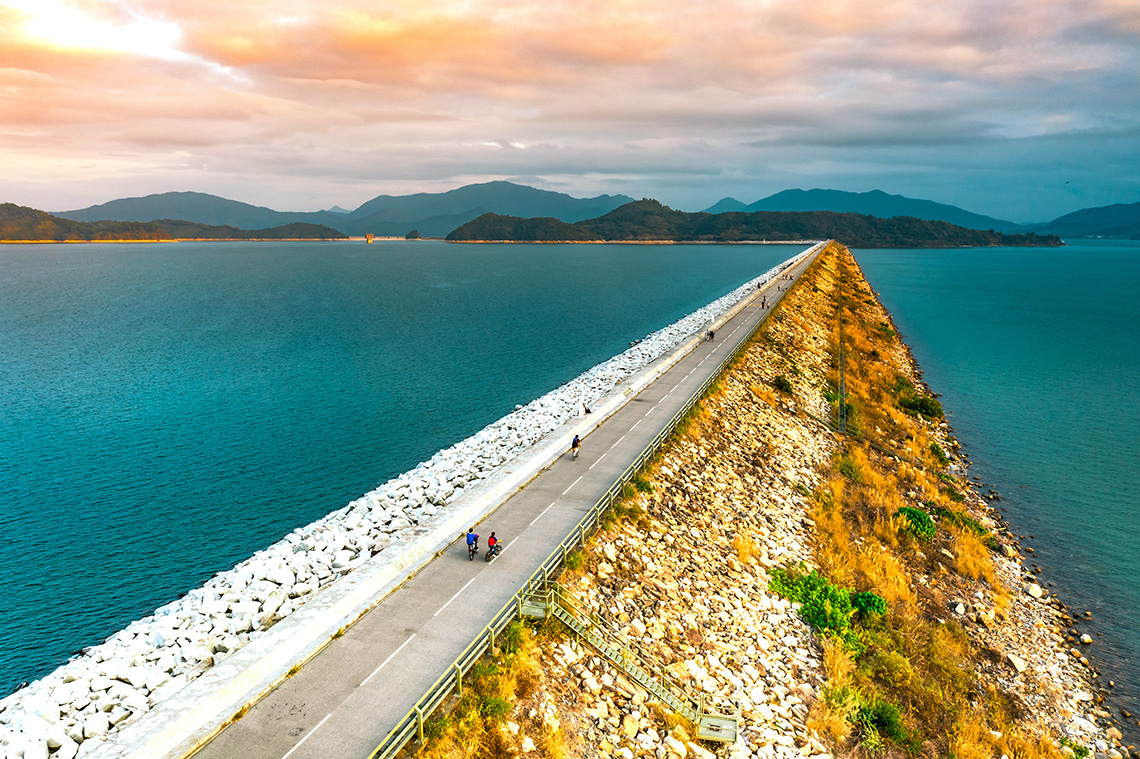
This is an image of a reservoir dam. There is a walking path over the length of the dam with sloping sides that are covered in rock and grass that slope into the dam on either side.
Select the correct answer.
Now that we have considered the ways nations are seeking solutions to balance the negative impact on the environment, complete the following true or false activity using your learning in this task.
Brainstorm
Brainstorm
What are some of the ways in which countries can do even more to ensure they are causing the least amount of environmental impact?
Inuit response to oil
The response of many Indigenous communities to resource extraction on their lands has been resistance. In some cases, they have protested treaty violations (treaties are meant to protect Indigenous lands and First Nations rights to hunting, fishing and harvesting) and exploitation of land and resources by challenging both the government and fossil fuel companies in court. For example, the Inuit community in Clyde River, Nunavut, won a court case that prevented seismic testing on their traditional territory by oil companies.
In 2017, the Supreme Court ruled that the Inuit were not properly consulted by the National Energy Board prior to seismic testing and therefore the oil companies could not proceed. The testing and proposed oil drilling and pipelines threatened the Inuit’s food supply of marine mammals and animals. In fact, the sound waves that are sent from ships through the water below the sea floor can cause harm to sea mammals and animals. The sound created is deafening and means that sea creatures such as whales and seals are not able to hear and avoid predators and other threats.
Press Definition to explore the definition of seismic testing.

A drilling rig set in the waters of Nunavut, close to Baffin Island. It is a large rectangular base with a steel rig set up on the base.
Brainstorm
Brainstorm
What can we learn from the Inuit community in Clyde River about threats to the environment and a community’s livelihood?
Heart Lake First Nation: Sustainability in the oil industry
Heart Lake First Nation is an example of an Indigenous community that is using its traditional ecological knowledge to help the oil industry in Alberta make sustainable and environmentally responsible choices. Heart Lake First Nation, which is located 220 km northeast of Edmonton in Alberta, depends on the land and its gifts for their spiritual, cultural, and physical needs through hunting, fishing, trapping, and gathering plants. As the oil sands were developed, however, the territory of Heart Lake was at risk from oil companies.
To help protect the land and reduce the environmental impact of oil extraction, Heart Lake First Nation created the Wapahki Solutions Inc. which is a 100 percent First Nation-owned company.

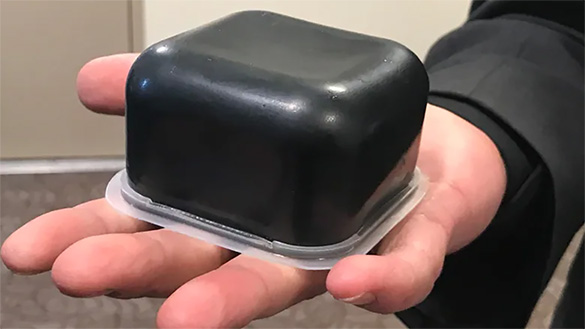
This is a picture of a person holding a CanaPux; a cube of bitumen wrapped in plastic. The plastic is made from recycled bags, bottle, other plastics and can be reused over and over.
One way Wapahki has contributed to sustainability of the oil industry is to help create the CanaPux, a puck of bitumen (oil) wrapped in recycled plastic. The pucks of oil are easily transported by train or ship. Unlike pipelines or oil tankers that can leak and spill oil, the pucks float in water and can be easily picked up off the ground if a train were to spill its contents in an accident. Wapahki also created Green Asphalt, which is an asphalt made with recycled plastic materials. The asphalt lasts longer and redirects tons of plastic pollutions away from landfills and the ocean. These are just two ways Heart Lake First Nation have used their understanding of sustainability to protect their traditional lands and to improve the oil industry.
Brainstorm
Reflect
How did Heart Lake First Nation use their ecological knowledge to help the oil industry in Alberta? What was the outcome?
Now that we have considered the ways Indigenous peoples are protecting ecosystems and wildlife and developing innovative ideas for more sustainable practices, complete the following true or false activity.
Select the correct answer.
Connections
Connections
What are some ways Indigenous peoples are leading the way towards sustainable development?
Task 2: Shift in resources
All of these changes and innovations show a shift towards the need for more sustainable resources, including the increased use of solar, wind and tidal energy, reduced consumption, and the promotion of energy-saving strategies.
Press on the following tabs to reveal more information about each example of sustainable resource.
Solar power is becoming increasingly practical to use as a resource for energy production and is beginning to be more widely used. Solar power is one of the fastest growing sources of electricity and accounts for approximately 2 percent of the world’s electricity sources. China, the United States, India, and Japan account for the countries currently producing the most solar energy. Three percent of Canada’s energy sources currently comes from renewable and flow energy, of which solar power is a fraction. The Noor Power Plant is world’s largest solar power plant and is located in Morocco. It has been predicted that Morocco may be a main supplier of energy and electricity for Europe by 2050.

The image shows a solar field in France. The solar panels are grouped in three rows and follow the contours of the rolling hills. Nice groups of panels are shown. Towering mountains are shown in the background.
Wind power generates energy production. Wind turbines are frequently placed in fields and on coastlines where winds are frequent. The top four countries that have invested the most and use wind energy include China, the United States, Germany, and India. Similar to solar power, wind power accounts for a fraction of the 3 percent of renewable and flow sources used towards Canada’s energy needs. When compared with solar power and tidal power, wind farms generate the largest amount of energy – more than five times that produced by solar power annually and hundreds of times more than tidal (although that number will fall after more development of tidal energy). Ontario, Quebec, and Saskatchewan account for the greatest producers of wind energy.
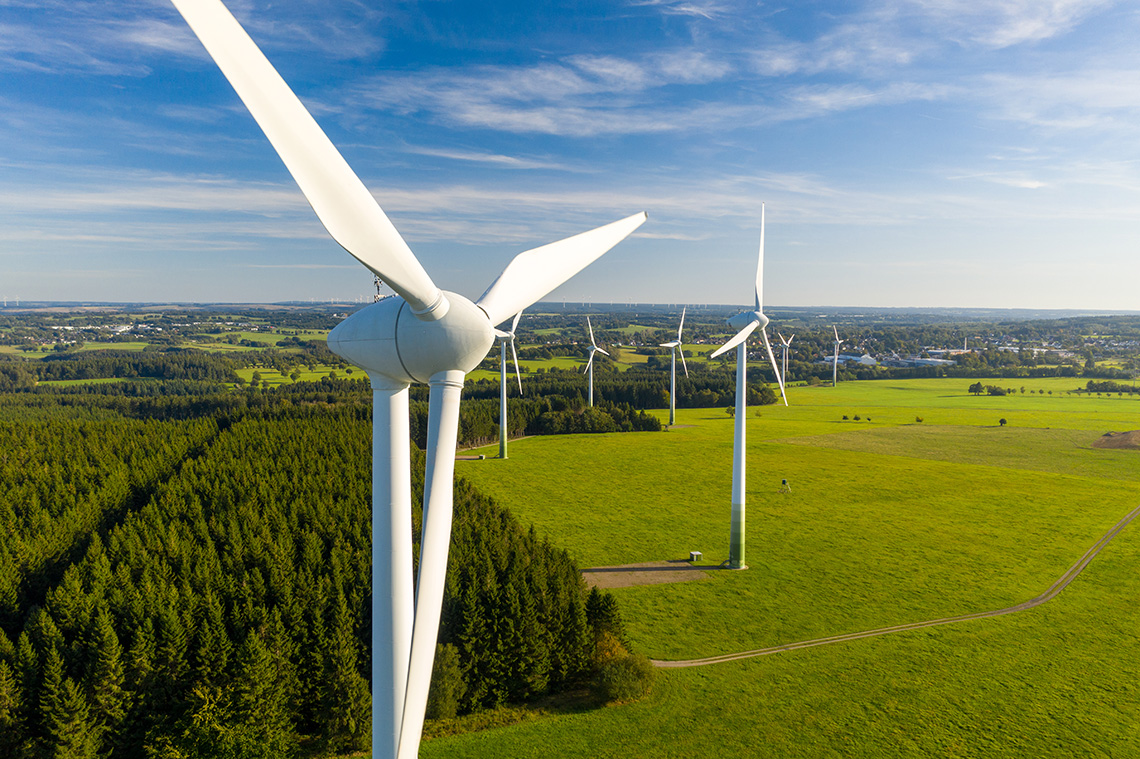
The image shows wind turbines. Many are shown moving in a line from the foreground to the background. They move across a flat field divided by water dike. Each turbine has three blades. The sun is setting and the sky is a deep blue.
Tidal power is generated by turbines using power of the rise and fall of sea levels. Like wind power, tidal power is dependent on location. The top countries using tidal power include South Korea, France, the United Kingdom, and Canada. Similar to solar power and wind power, tidal power accounts for a fraction of the 3 percent of renewable and flow sources used towards Canada’s energy needs. Currently, Canada has one tidal station in Nova Scotia, so its energy production output is lower than solar and wind farms. There are plans to develop more tidal stations in eastern Canada on the Atlantic and this will lead to a steep increase in energy output.

The image shows a tidal turbine. The tidal turbine is in the ocean at low tide. The tower in the middle is intersected by a long white piece with what appears to be a blade on each end.
Connections
Connections
- Why do you think it is taking time to convert from traditional fossil fuel resources to solar, wind, and tidal power?
- Do you think these flow resources will some day account for 100 percent of the world’s energy needs?
Consolidation
My sustainable action plan
Besides all of the innovative resource solutions being applied through the use of renewable and flow resources, we can make changes in our daily lives that contribute towards a sustainable future. We can take many actions.

Press on the following tabs to reveal specific actions.
After considering the choices we can make towards sustainability, let’s think about how we can change our own habits. Using a method of your choice, create and/or describe a list of the actions you are taking to become more sustainable. Record at least one action for each issue.
Complete the My Action Plan in your notebook or use the following fillable and printable document.
|
Issue |
My Plan |
|---|---|
|
Recycle |
|
|
Reusables |
|
|
Transportation |
|
|
Travel |
|
|
Energy use |
|
|
Purchasing choices |
|
|
Spread the word |
Press ‘Activity’ to access My Action Plan.
Reflection
As you read the following descriptions, select the one that best describes your current understanding of the learning in this activity. Press the corresponding button once you have made your choice.
I feel...
Now, expand on your ideas by recording your thoughts using a voice recorder, speech-to-text, or writing tool.
When you review your notes on this learning activity later, reflect on whether you would select a different description based on your further review of the material in this learning activity.
